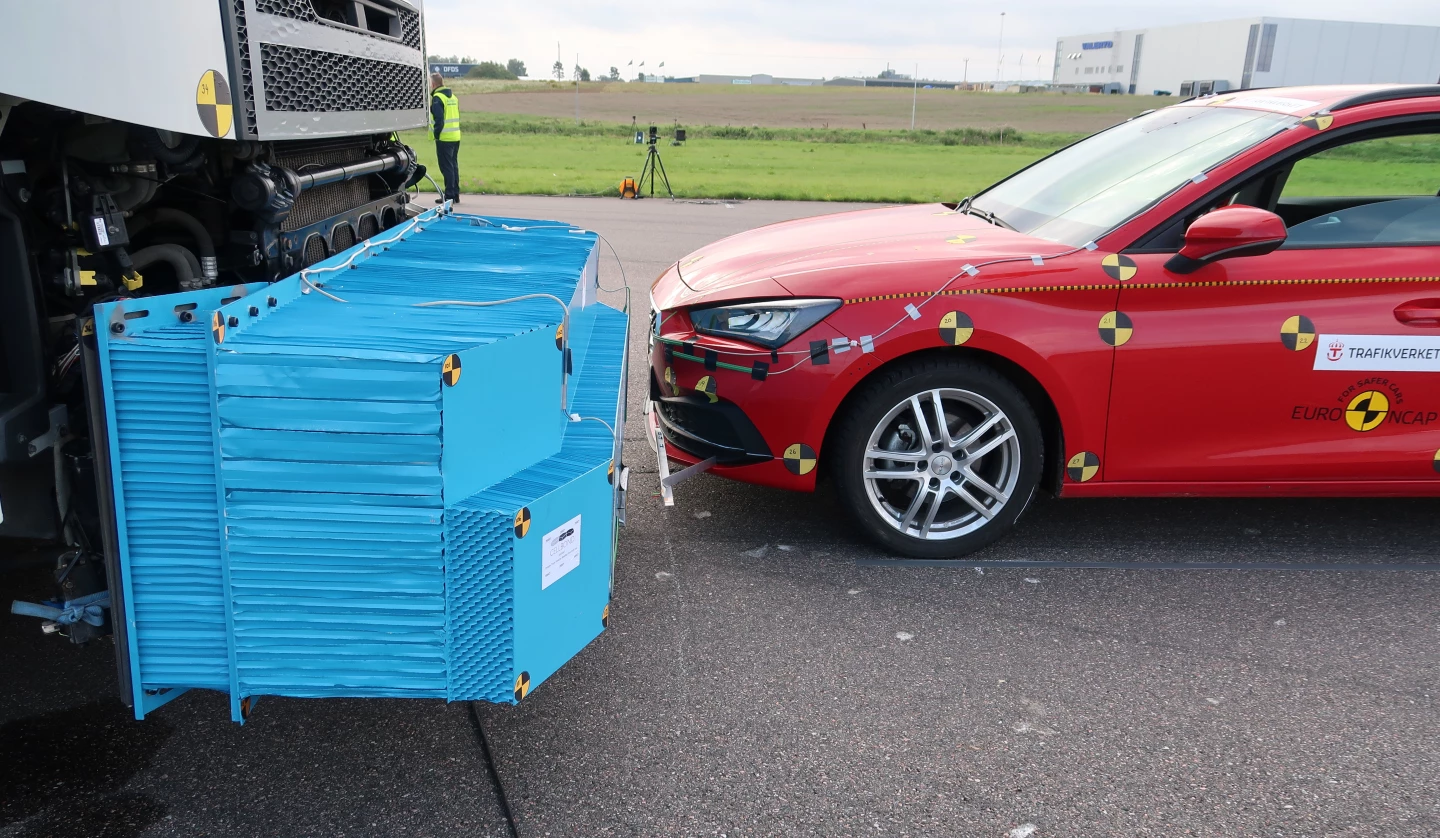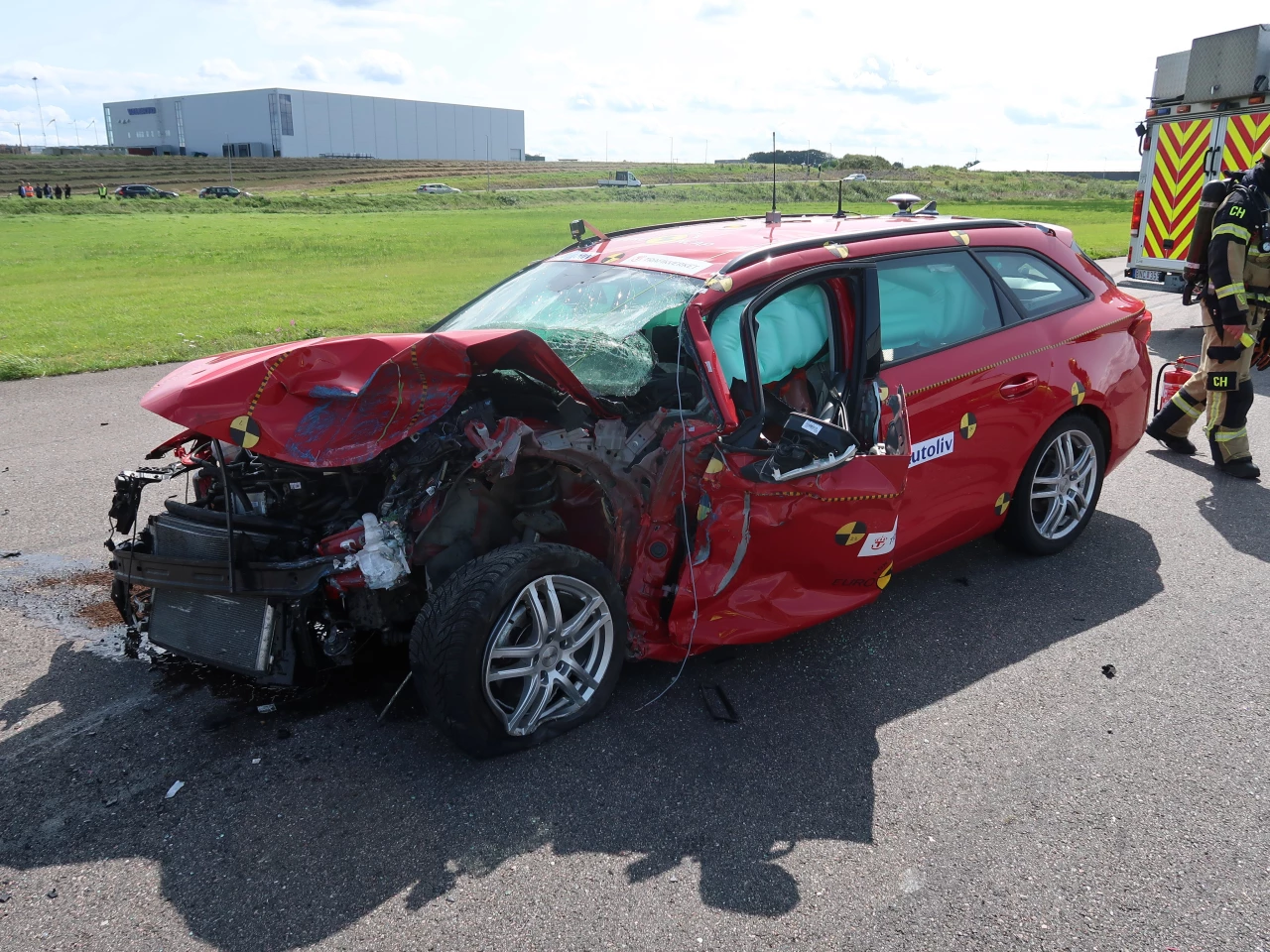A new Swedish-designed front end for transport trucks could help reduce driver deaths in collisions with passenger cars. The structure is designed to both spread and absorb the force of impact between the two vehicles.
According to scientists at Sweden's Chalmers University of Technology, when fatalities occur as a result of collisions between cars and trucks, it is the driver of the car who dies in over 90% of the incidents. That figure applies to both head-on collisions and rear-endings in which the truck hits the car.
This isn't too surprising, given the fact that transport trucks are so much larger than cars. However, a big part of the problem reportedly stems from the fact that the crumple zones in cars don't always line up with those in trucks. As a result, most of the impact energy is absorbed by the car, to the extent that passengers may be crushed.
In Europe, due to government regulations restricting the length of trucks, most of the vehicles have tended to have a cab-over (flat-fronted) design. While this format maximizes the amount of truck-length available for cargo, it doesn't allow for much in the way of front-end safety features.
Those regulations were amended in 2019, however, so adding stuff to the front is now much more doable. That's where the new front end comes in.

Designed by a Chalmers team led by Prof. Robert Thomson, the lightweight structure is essentially a car-level protruding bumper made of hexagonal aluminum-foil tubes arranged in a honeycomb pattern. It's about 97% air by volume, allowing for plenty of "give" in collisions.
That said, the exact manner in (and extend to which) it crumples can be tweaked by varying the thickness of the foil. And yes, it's significantly thicker than the aluminum foil you use in your kitchen.
In closed-track car/truck collision tests performed by the Swedish Transport Administration, use of the structure was found to reduce passenger compartment deformations in cars by 30 to 60%, reducing the risk of death or injury correspondingly. The vehicles were both traveling at a speed of 50 km/h (31 mph), although the tests were simulating a scenario in which automatic emergency braking systems would have slowed the car and truck down from a cruising speed of 80 km/h (50 mph).

As an added bonus, the truck itself was better protected against damage to its steering, braking and suspension systems.
You can see one of the crash tests in the following video.







